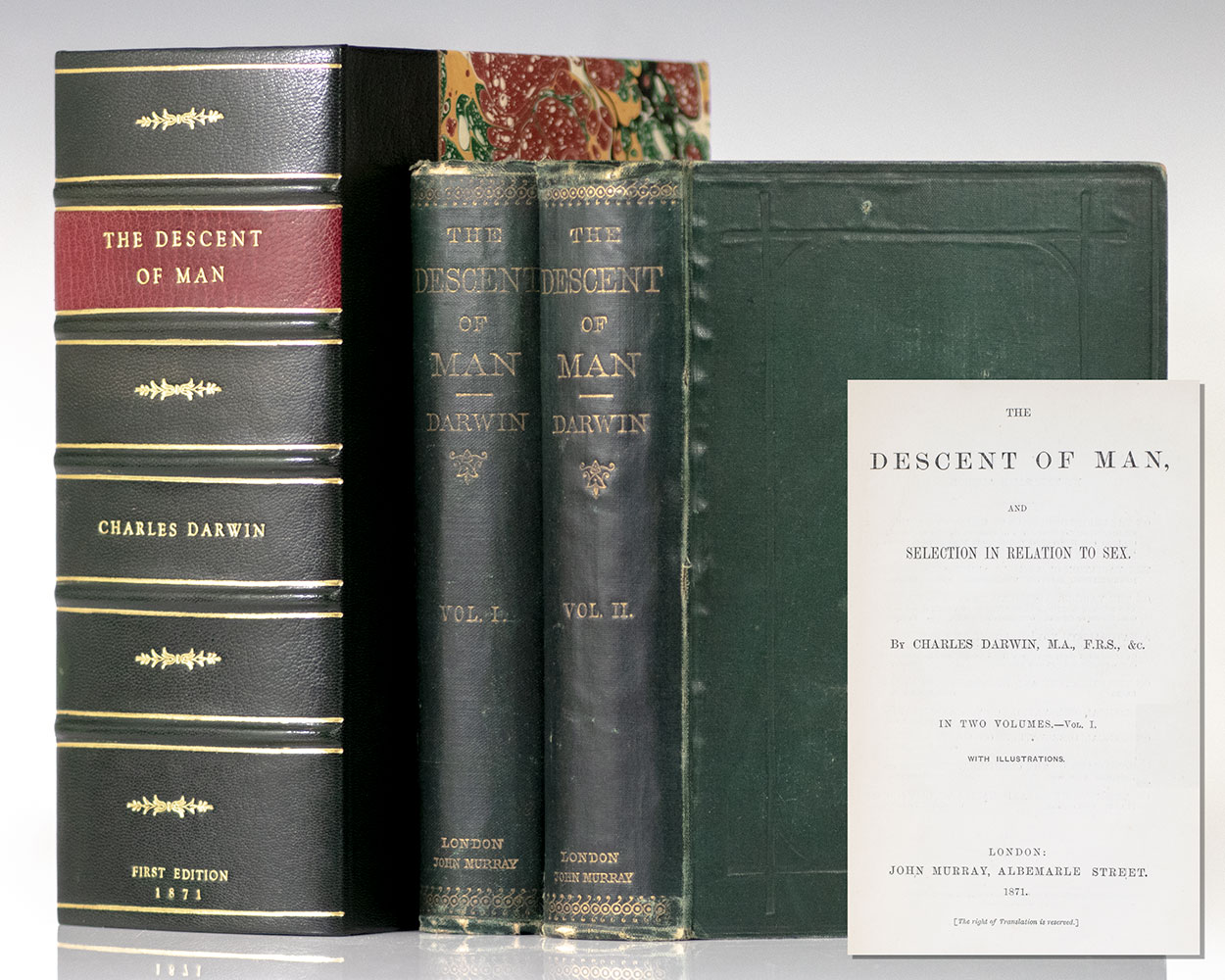Narrative of the Surveying Voyages of His Majesty’s Ships Adventure and Beagle, Between the Years 1826 and 1836, Describing Their Examination of the Southern Shores of South America, and the Beagle’s Circumnavigation of the Globe.
"THE MOST IMPORTANT EVENT IN THE HISTORY OF BIOLOGICAL SCIENCE": First edition of Charles Darwin's Narrative of the Surveying Voyages of His Majesty's Ships Adventure and Beagle Between the Years 1826 and 1836, Captain Richard Charles Mayne Copy and used on board the HMS Nassau during his survey expedition
Narrative of the Surveying Voyages of His Majesty’s Ships Adventure and Beagle, Between the Years 1826 and 1836, Describing Their Examination of the Southern Shores of South America, and the Beagle’s Circumnavigation of the Globe.
DARWIN, Charles.
Item Number: 125508
London: Henry Colburn, 1839.
First edition of the account of the most famous voyage in the history of biological science and modern thought, volume III being the first issue of Darwin’s Journal, his first published book, containing the observations and fieldwork that form the basis for On the Origin of Species. Octavo, four volumes (including Vol. II of the Appendix) bound in three quarter morocco over marbled boards with morocco spine labels lettered in gilt, half-titles present, 7 engraved folding maps and charts, 48 plates and charts and 6 in-text illustrations. From the library of the British Royal Navy’s Office of the Admiralty, this copy was borrowed by Captain Richard Charles Mayne and used on board the HMS Nassau during his survey expedition to the Straits of Magellan, 1866-1869. With an annotated typed note laid in signed by Lieutenant Commander Andrew David of the Admiralty’s Hydrographic Department which reads: The voyages of Adventure and Beagle was apparently used by Captain Richard Maybe of H.M.S. Nassau for his surveys of Magellan Strait which commenced in 1866. The corrections given in the Errata et Corrigenda were inserted in 1866. Some of the amendments to positions given in the appendix to volume II agree with those given in the Hydrographic archives from Nassau’s observations and they both seem to be in the same handwriting. “ACF David” (A.C.F. David) Lieutenant Commander Hydrographic Department 28th July 1974 Other marginalia eg Vol II page 594 by G.H. Richards, later Hydrographer. David has also added a later annotation to the note: “The pencil notation on page 325 of the Appendix to Vol 2 stating that Morrice Pocket Chronometer 6144 was also on the Nassau confirms my supposition below ACF David 25th August 1989.” Upon learning of Mayne’s planned for a survey expedition to the Straits of Magellan, Darwin requested the Lords of the Admiralty to ask Capt. Mayne to collect several boatloads of fossil bones of extinct species of quadrupeds. Admiral Sir Bartholomew James Sulivan had previously discovered an astonishingly rich accumulation of fossil bones not far from the Straits which were found to have belonged to a more ancient period than the fossils collected by Darwin on HMS Beagle, and therefore of great interest to science. In near fine condition. With the British Royal Navy’s Office of the Admiralty Library stamp, the Hydrographer’s Office stamp , and ACF David’s bookplate to each volume. In very good condition. An exceptional example of this landmark work with noted provenance.
"The five years of the voyage were the most important event in Darwin's intellectual life and in the history of biological science. Darwin sailed with no formal scientific training. He returned a hard-headed man of science, knowing the importance of evidence, almost convinced that species had not always been as they were since the creation but had undergone change… The experiences of his five years in the Beagle, how he dealt with them, and what they led to, built up into a process of epoch-making importance in the history of thought" (DSB). In his own words: 'The voyage of the Beagle has been by far the most important event in my life, and has determined my whole career' (Charles Darwin, Life and Letters I, p.61). Darwin's Journal, "his first published book, is undoubtedly the most often read and stands second only to On the Origin of Species as the most often printed" (Freeman, 31). It is "one of the most interesting records of natural history exploration ever written and is one of the most important, for it was on this voyage that Darwin prepared for his lifework, ultimately leading to The Origin of Species" (Hill I:104-05). Volume I contains Captain King's account of the first expedition, which surveyed the coasts of Patagonia and Tierra del Fuego; Volume II, with its appendix volume, is Captain Fitzroy's account of the second voyage of the Beagle. Complete with 44 plates, four inserted charts and maps, and eight folding maps. (Folding charts and maps, originally issued loose, have been bound into their respective volumes, at the rear.) Bound with half titles. Bound without publisher's advertisements at rear of Appendix volume, lacking the map of the Keeling Islands, frontispiece and 4 plates to vol. I trimmed and mounted. Freeman 10. Norman 584. Hill I:104-05. Sabin 37826.
We're sorry, this item has sold.














